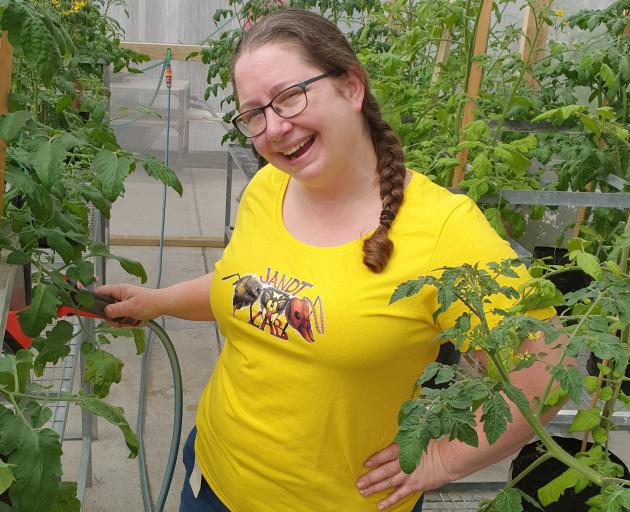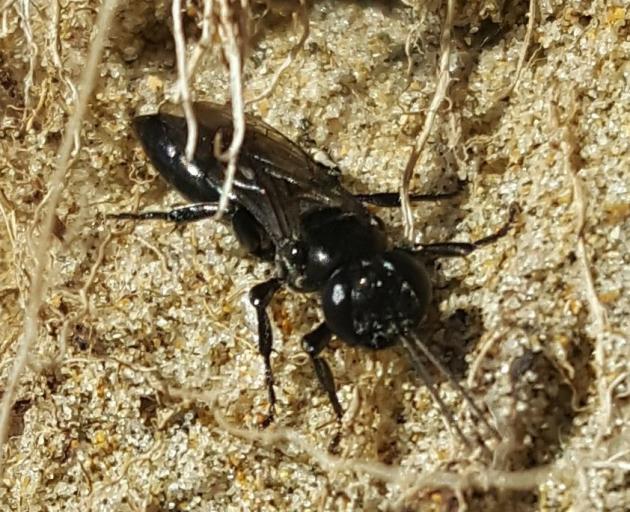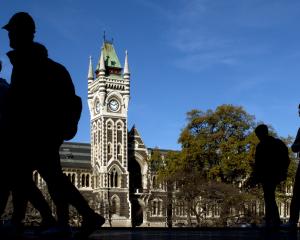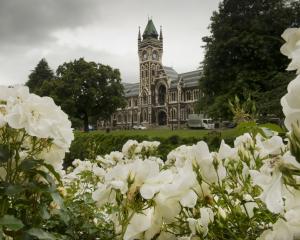
But to University of Otago entomologist Dr Jenny Jandt the wasps are "cute and tiny and adorable" and under-appreciated by New Zealanders.
They could be found throughout the country, along the sandy banks of streams and coastal beaches, but because they were tiny and black, they were often mistaken for sandflies, Dr Jandt said.
Unlike sandflies or social wasps, hunting wasps did not bite or sting humans.
The bug is one of 20 vying for top honours in the second annual Entomological Society of New Zealand Bug of the Year competition, and Dr Jandt is backing it 100%.
"Wasps and bees are my jam, so I’m a bit biased."
"But the black cockroach-hunter wasp only has about 100 votes at the moment — there’s no chance my wasp is going to win," Dr Jandt said.

"Wasps get a bad rap in New Zealand, so if I could spread the word that there are wasps out there that are cute and tiny and adorable and they eat cockroaches — come on, New Zealand, vote for the wasp."
Contest committee member and Museum of Te Papa Tongarewa entomologist Connal McLean said New Zealand was home to thousands of fascinating insects, spiders, slugs, snails, centipedes, springtails and other bugs, which made up more than half of our animal diversity, and many of them were found nowhere else on the planet.
Bugs were vital for the health of our ecosystems because they provided food for our birds and fish, pollinated our crops and flowers, kept our soils aerated and decomposed our waste.
The nominees are: the globular springtail, minute grasshopper, rangatira spider, orange-spotted ladybird beetle, tuatara tick, Cromwell chafer beetle, katipō spider, titiwai (New Zealand glowworm), hobbit psyllid, ngaro wīwī (black cockroach-hunter wasp), pepe pouri (forest ringlet butterfly), kapowai (Carove’s giant dragonfly), scree cicada, hura (giant centipede), Mt Cook flea, New Zealand praying mantis, superb giant land snail, kahukura (New Zealand red admiral butterfly), Mt Arthur giant wetā and the ngāokeoke (New Zealand velvet worm).
Voting closes on February 13 and the top bug will be announced on February 14.












